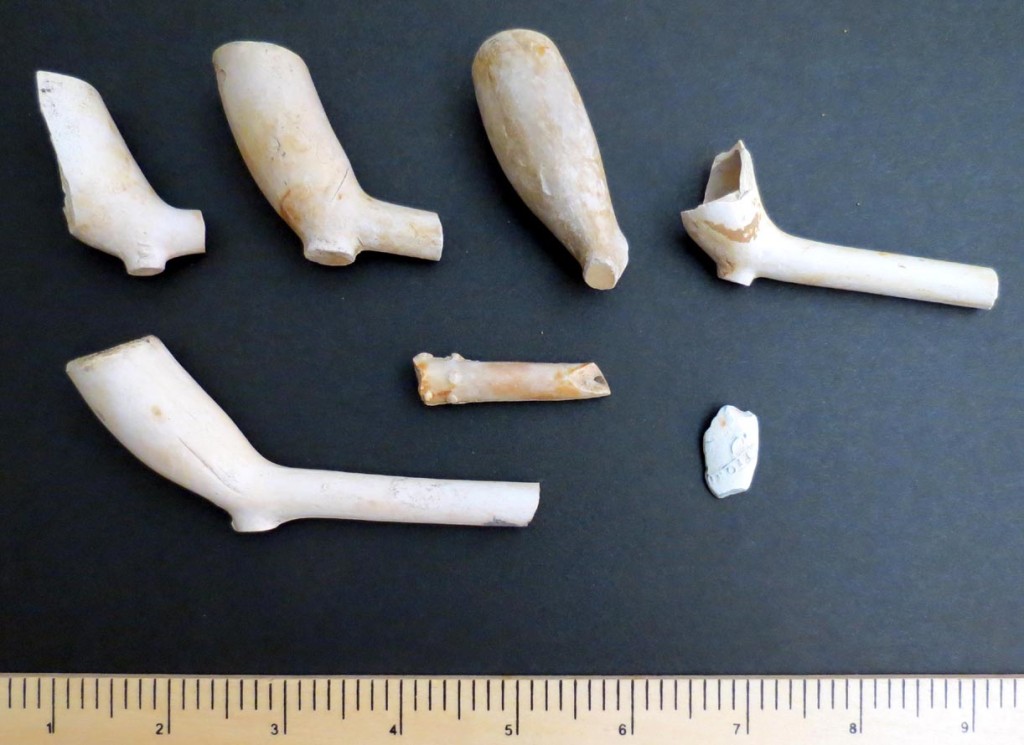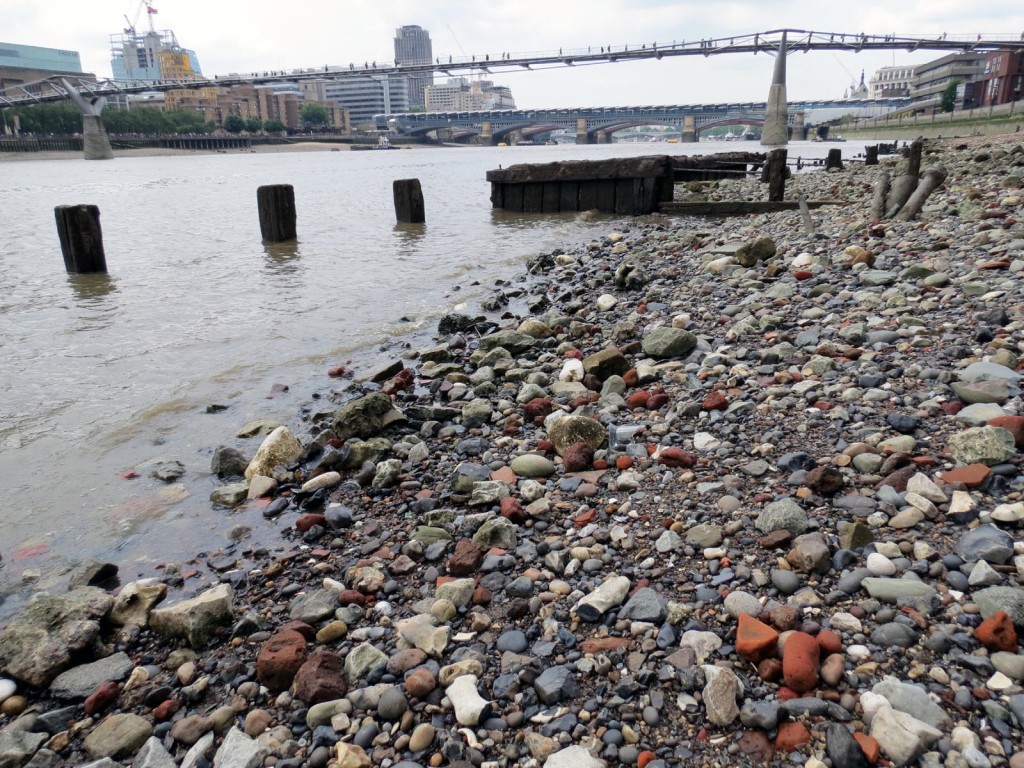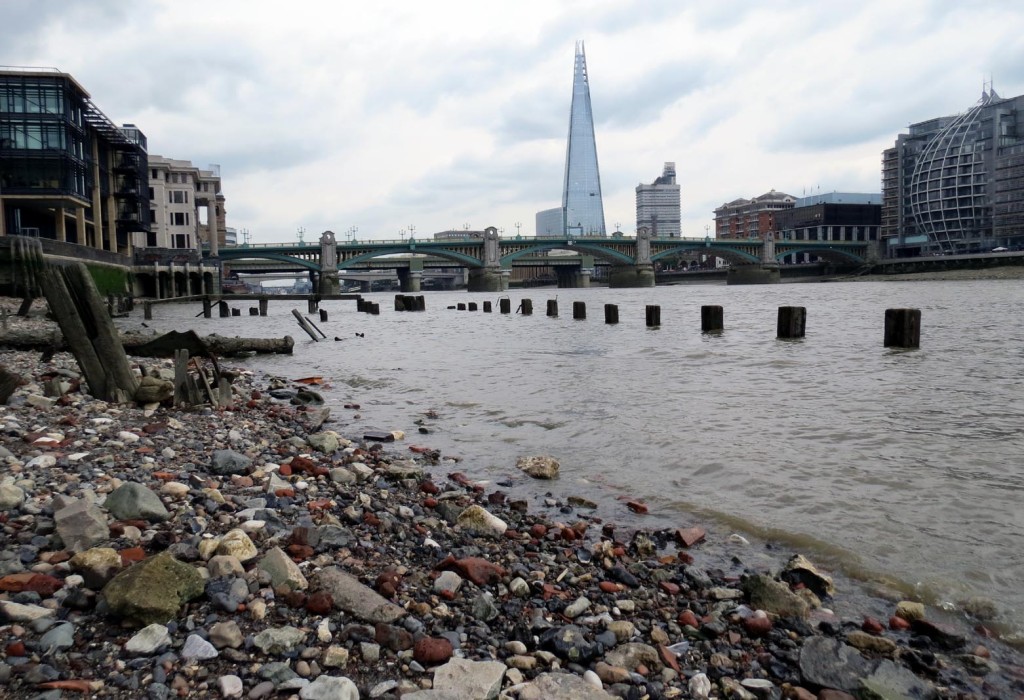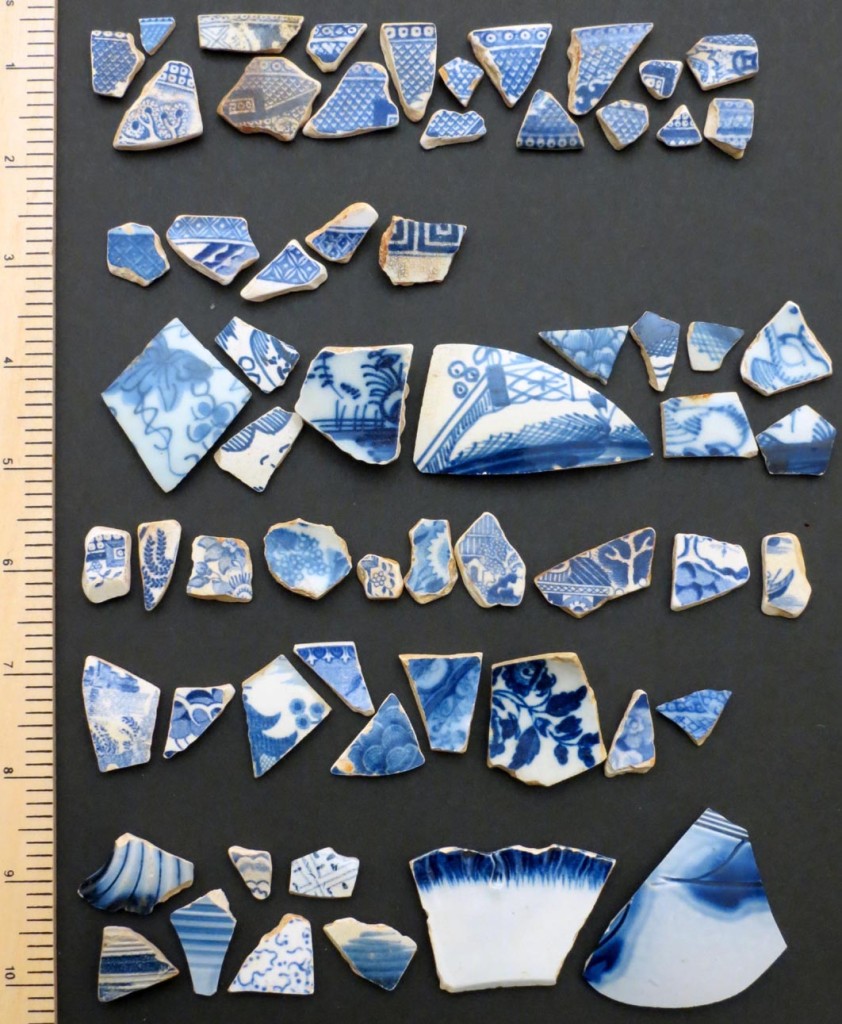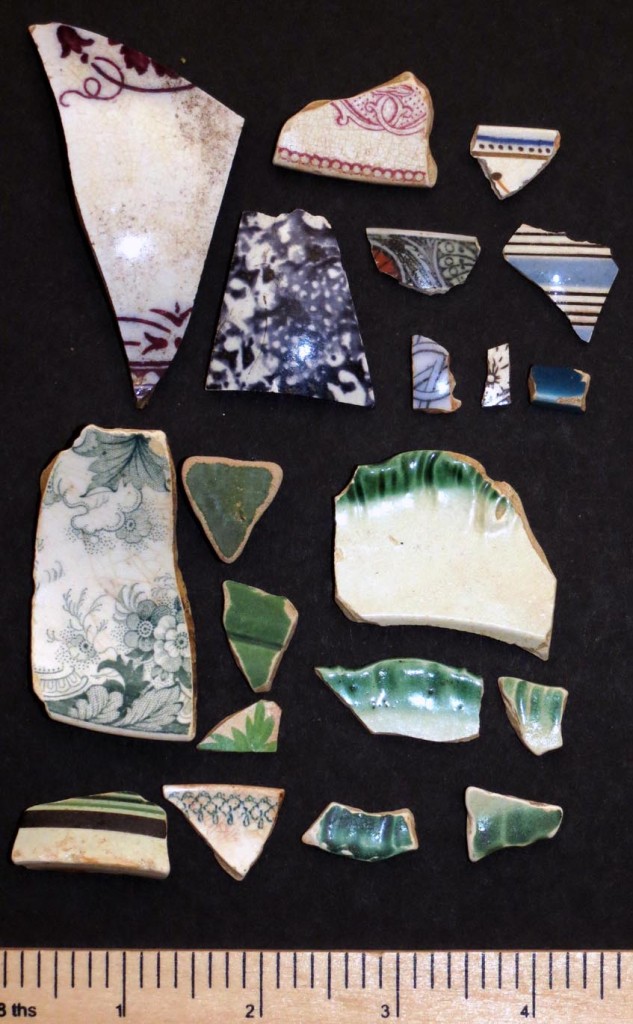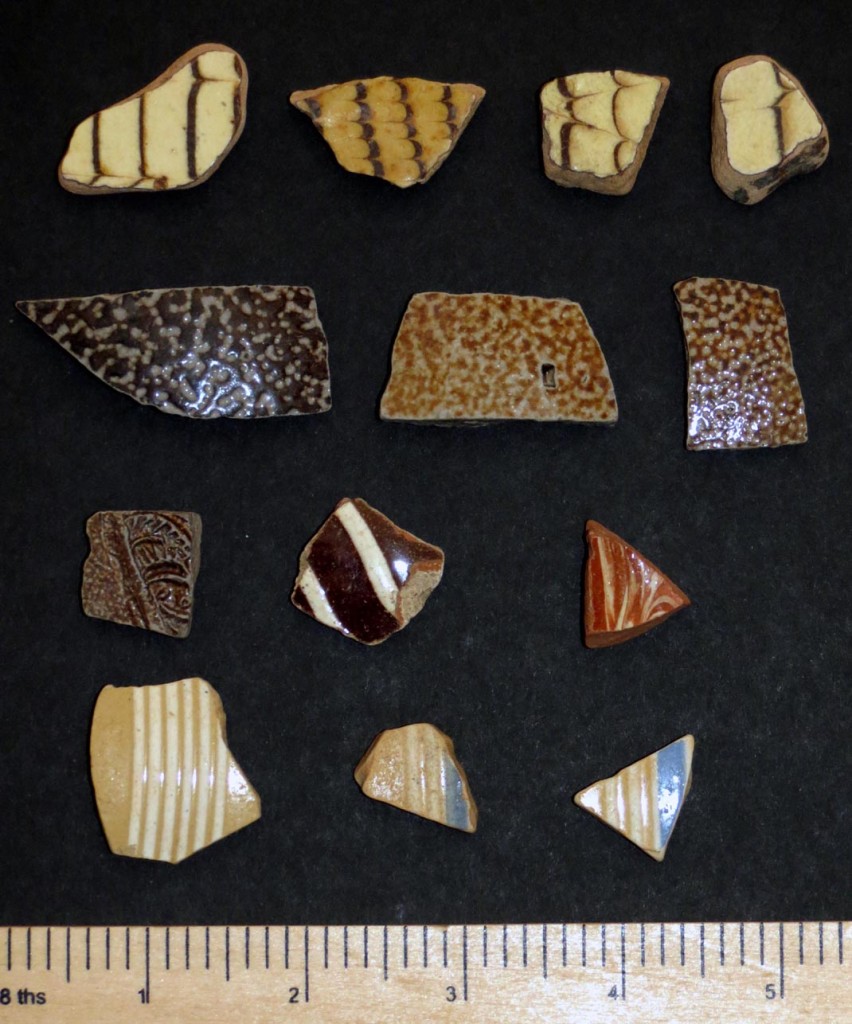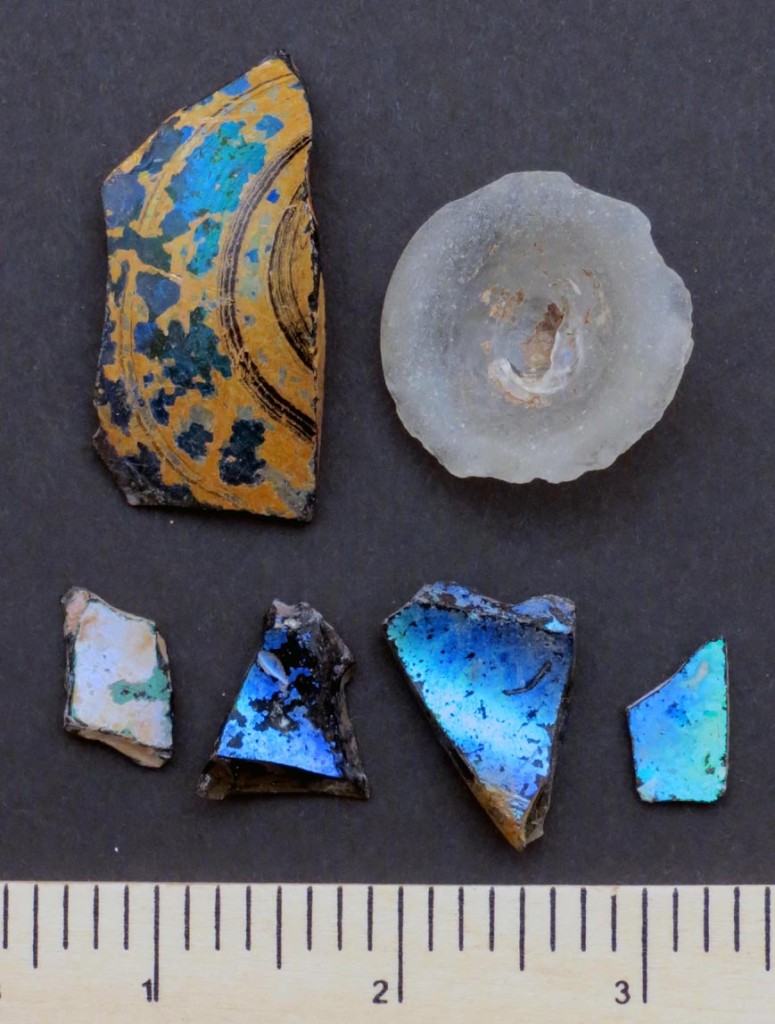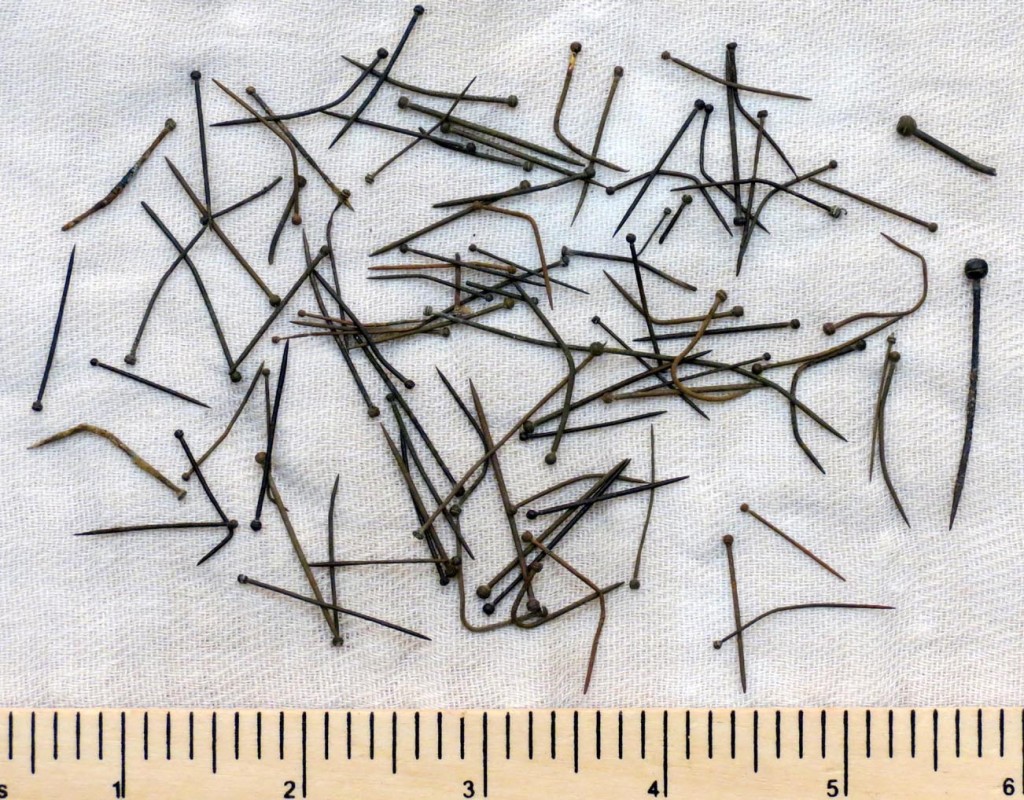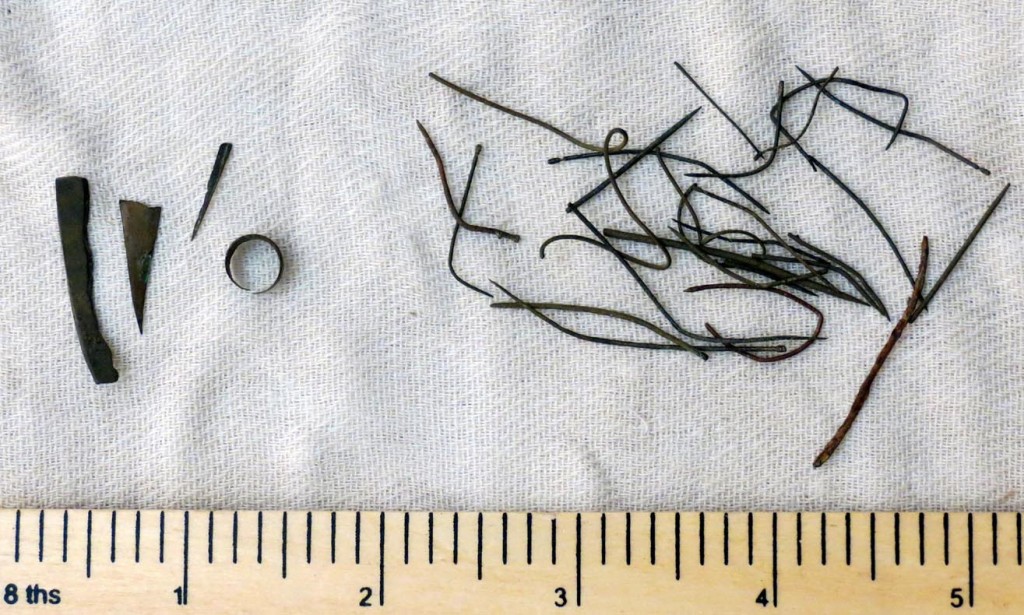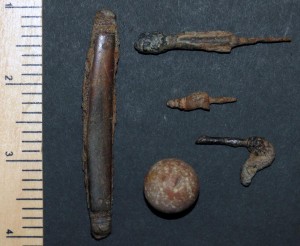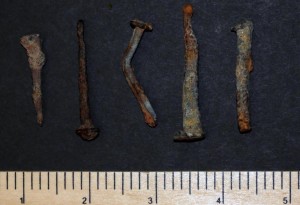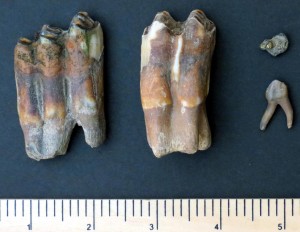I finally photographed my mudlarking finds from 27 June. Nothing I found was “wow”-worthy, but I had a great time. People might enjoy seeing what sort of historical refuse one finds along the Thames foreshore.
This isn’t my first time wandering the waterline — while we were living near St Paul’s we set off on walks along the river more than once. Once we happened to be out at low tide and I encouraged the kids to come down with me and take a look. At that time I didn’t even know that the Thames had tides — I’ve lived along rivers most of my life, but not tidal ones!
In May I took my brother-in-law and his fiance down to the shore. Although I’d learned how to look up the tides, I didn’t know where to climb down to the water. Many stairs have locked gates. We spent perhaps half an hour looking around the south bank near the OXO Tower, and I found what I’d hoped for: several bits of clay pipes. Most were plain with larger bowls, likely from the 18th century. The tiny bit on the lower right has a word on it, DROIT, which I assume means the piece was stamped with the motto Dieu et mon droit.
In late June, guided and inspired by London Mudlark‘s Facebook posts and Julia’s Mudlarking Blog, I set off for the river below Millenium Bridge, the pedestrian passage from St Paul’s Cathedral to the Tate Modern Museum. The tides were unusually low (conveniently in the middle of the day when the boys were at school), the skies were sunny and the weather warm.
I snapped photos as I was leaving — when the water was low I was too busy hunting. The tide comes in quickly; I stayed only two hours, but when I arrived I could easily walk beyond the pilings. Across the river is the reconstructed Globe Theatre (not located in quite the same place as the original, but fairly close). Downstream you can see Southwark Bridge and The Shard — the newest, tallest building in London.
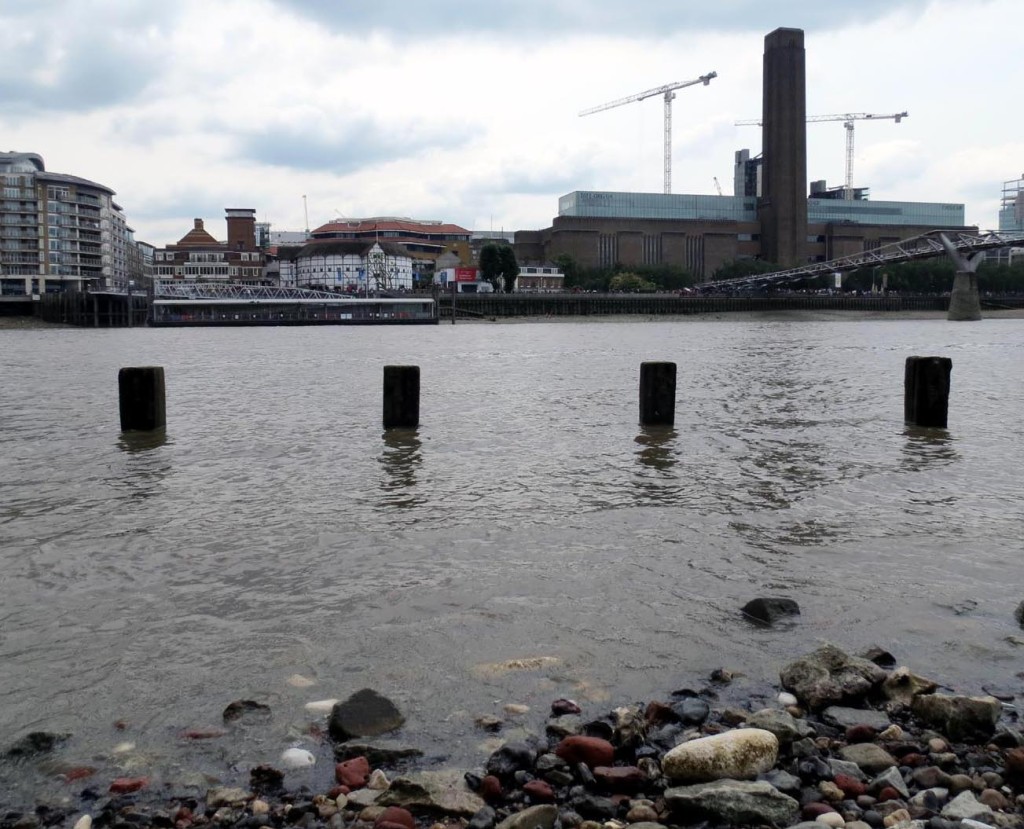
My goal was simple: I wanted to find pins. I’d heard that they were everywhere on the foreshore, and I thought that they would be one of the most accessible costume-related Tudor-era finds that I might make. I have never had much interest in antiques. In my opinion, if it is cool enough for me to want it, it belongs in a museum where everyone can see it. As with so many things having to do with history, the experience of living in England is changing me. (For example, I now consider something from the 18th century “fairly modern” and “not that special”.) At the School of Historical Dress leatherworking class I’d seen mudlarking finds that Jenny Tirimani and Karl Robinson bought: belt buckles, studs, chapes, purse frames and ornaments. This shifted my thoughts about mudlarking: here were actual Tudor era objects from which I could learn, but they weren’t museum-display-worthy. Without a metal detector I didn’t think I’d find any buttons or buckles, but if pins were plentiful, then I’d set my sights on those: findable, interesting, not valuable.
But I had to figure out how to find pins. I started walking near the water’s edge, just looking. I found pottery shards. Although they weren’t what I wanted to collect, I found them irresistible. Tiny little bits of history, itty bitty hand painted patterns, spots of color among the stones. I would almost immediately imagine them as jewelry, and they would slip into my bag. Blue is by far the most common color:
There are geometric patterns (rows 1 and 2) and hand painted pieces (3) with recognizable botanical motifs and outdoor scenes (4). Some are more modern transfer ware (especially the fourth row), and some I have no idea about! There are also other colors, especially green:
I grouped some together as “brown”, which included basic styles like slipware and salt glaze. The first piece on the third row has a nice raised pattern to it, too. Perhaps it is part of a Bellarmine jar? I won’t pretend to be any sort of expert, as almost everything I know comes from reading posts by the ladies I mentioned above!
The shimmering glass, which I REALLY didn’t mean to collect, caught my magpie eye. Unfortunately, the iridescent layer flakes easily. I found the center of the bottle interesting, perhaps because it clearly shows where the item was hand made. I find arts in which I have not dabbled, such as metal and glass work, fascinating, imagining that they are beyond my abilities.
Clearly, I was not finding pins. As I pressed further down the shore, I tried to picture in my mind what the London Mudlark’s photo of pins in situ looked like…sand. I needed to find sand. The shore is rocky, washed clean by the wake of many boats. I wandered away from the largest stones, found a sandy/muddy bit and knelt. Stared at it. Found it. A pin. Another. Another, and another. I stayed on my knees until they were bruised and I could find no more scraps of metal, then moved on to another likely patch of damp sand, and more success. When I came home, I counted 99 pins in my bag — counting ONLY ones that still had wire-wrapped heads.
I think I have two chunky hat pins in here (far right), and the rest would be pins for dressing or sewing. Some are incredibly tiny and delicate.
While down in the mud I also found some other intriguing metal bits: aglets! These covered the ends of laces with which clothes used to fasten; we retain them in modern clothing on the tips of shoelaces. My finds varied slightly: one hole going all the way through both sides, one hole only on one side, or two holes; tapered or straight; both edges crimped under at the side seam or just one (none of them seemed to just meet in the middle, like those I’ve bought at reenactor markets). Two of them still have the metal pins through the holes at the top (aglets were not sewn to cords). I wonder — was one long edge (or two) bent slightly, then the whole tube curled around the end of the braid or ribbon that was being finished? That way not only would the pins at the top grip the cord, the entire length of the aglet would bite into it. Or were they rolled into their final shape before the braids were inserted?
I also found a small metal rod (a stylus?), a claw-shaped metal object (my biggest mystery), three interlocking riveted rings (like mail), a single riveted ring, some rings without rivets, some twists of wire that I think probably held small bundles of good, and a tack.
The metal scraps on the left below might be trimmings from making aglets and wire. The pile of wires undoubtedly contains many pins that have lost their heads (I can see where many of them have been sharpened at one end).
I was not alone on the foreshore; I spoke to several other mudlarkers and a photographer. We would inquire politely about what brought us to the Thames that day, and all wanted to know why I was kneeling in the dirt. I was by then soaked from the knees down. Waterproof boots were no match for the waves that rolled toward me in the wake of passing boats. Kneeling near the waterline, I couldn’t move quickly enough to avoid these, and soon stopped trying. All were impressed by the bristling handful of pins.
I collected other odds and ends, too: A pocketknife that reminds me a great deal one I had as a child; it had been my grandfather’s and he let me have it. A clay marble. Some sort of rusted nails that seem to have a covering of metal that is peeling off them — I don’t know what they are, just something curious. And a bit of metal that I think was the head of a safety pin.
There are square, hand-forged nails on the shore of all sizes. I collected a few to show my aspiring blacksmith son.
One can also find bones and teeth on the shore, mostly leavings from long-ago butchers. I think I’ll send these back to the river next time, along with the shiny little chunk of pyrite I collected.
I was nearly ready to leave, just looking about a bit under the bridge itself, when I again struck up a conversation with two mudlarkers (the same two mentioned in Julia’s blog post!). They kindly invited me to join them at the Tate Modern for a bite, and we had a wonderful time chatting there. They showed me photos of the jewelry they make with their finds, and we found each other’s Pinterest pages. I probably needed that conversation time more than any mudlarking, as Tom had been in California for five days and I hadn’t done anything social during that time. Wonderful ending to a wonderful day!

